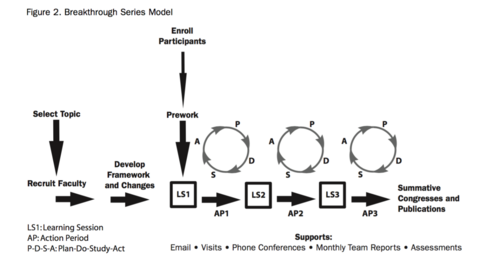Patient Safety
Patient Safety – Building a Vision for Primary Care
In June 2016, the QI/PD Patient Safety Task Group completed its mandate and provided the DFCM Executive Committee with recommendations as follows:
- Support a ‘community of practice’ for primary care patient safety to enable networking and sharing across the academic sites
- Support and enable education initiatives to build capacity for carrying out primary care patient safety initiatives
- Explore and leverage collaborations with organizations in developing education initiatives to support capacity building for primary care patient safety.
In April 2016, the QI Program held a PC patient safety planning day. The following guiding principles were established.
Patient Safety in Primary Care Guiding Principles:
- Make a commitment … take action to address patient safety in meaningful ways
- Create a supportive culture … advance patient safety learning and teaching without ascribing blame
- Engage patients … seek to understand what safety means to them and the areas that they would like improved
- Involve the team … drive staff, faculty and trainees engagement in patient safety
- Measure performance … implement mechanisms to track and monitor patient safety
- Share experiences … introduce vehicles to exchange patient safety ideas and learnings within and across sites
Primary Care Patient Safety Learning Collaborative
In February 2017, the Quality Program Committee (QPC) supported the use of the IHI Breakthrough Series (BTS) – a Learning Collaborative as the organizing framework for a primary care, patient safety community of practice.
The BTS was developed by IHI to support breakthrough improvement. It is a structure that enables networking and sharing between teams and permits learning between teams and from experts (in both content and process). The BTS is characterized by education-focused, in-person events or learning sessions followed by action periods. Teams come together for learning sessions to learn, network, share and profile their work. During action periods, in between the learning sessions, teams work on their QI project measuring, analyzing systems and testing change – doing improvement work!

A list of the learning collaborative patient safety projects can be found here.
A link to the Patient Safety Learning Collaborative (PSLC) Team Assessment can be found here.
Learning Session Documents
Learning Collaborative Session 1 - March 31, 2017
Learning Collaborative Session 2 - June 16, 2017
Learning Collaborative Session 3 - October 20, 2017
Concluding Congress Session 4 - February 9, 2018
Learning Collaborative Important Dates:
- March 31, 2017 - Learning Session 1
- June 16, 2017 - Learning Session 2
- October 20, 2017 - Learning Session 3
- February 9, 2018 - Congress
All sessions are from 8:00 am to 12:00 pm in room 365/303 at the DFCM (500 University Ave).
Learning Collaborative Webinar Dates - from 12:00pm to 1:00pm:
- April 27, 2017 - webinar slide deck
- May 24, 2017 - webinar slide deck
- September 20, 2017
- November 22, 2017
- January 17, 2018
Adobe Connect link to join the webinar:http://uoftfamilymedicine.adobeconnect.com/patientsafety-lc-webinar
Patient Safety Resources
Significant Event Analysis (SEA) Framework
Patient Safety References of Interest in Primary Care (most helpful highlighted)
Supporting a Safe Culture for Patient Safety
Engaging Patients in Patient Safety
Articles/Publications
Patient Safety Learning Systems: A Systematic Review and Qualitative Synthesis
Deficits in Communication and Information Transfer Between Hospital-Based and Primary Care Physicians: Implications for Patient Safety and Continuity of Care
Event Reporting to a Primary Care Patient Safety Reporting System: A Report From the ASIPS Collaborative
Patient safety culture in primary care: developing a theoretical framework for practical use
Developing a primary care patient measure of safety (PC PMOS): a modified Delphi process and face validity testing
Patient Safety in Primary Care
A Framework for Safe, Reliable, and Effective Care
How U.S. Health Care Got Safer by Focusing on the Patient Experience
The global burden of diagnostic errors in primary care
How To Build Psychological Safety On Your Team
Improving PS Culture in PC
Patient Safety Incident Reporting - Canadian Health System
Understanding Psychological Safety in Health Care and Education Organizations
